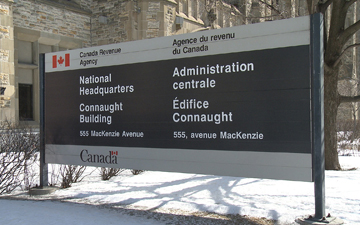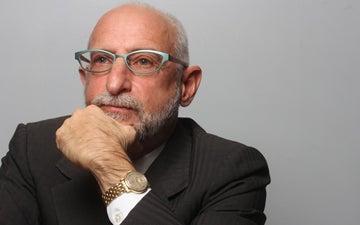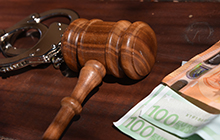When does a CRA tax audit become a criminal tax investigation?

Canadian tax lawyer and accountant David J. Rotfleisch looks at the "Jarvis Standard" and the case of Softcom Solutions
 |
Substantial leeway will be given to the CRA as to when a non-criminal tax audit has concluded, and a criminal investigation has begun, explains David J. Rotfleisch, CA, CPA, JD, of Rotfleisch & Samulovitch P.C. |
Introduction: CRA's Criminal Tax Evasion Powers
The Income Tax Act grants the Canada Revenue Agency the power to investigate criminal tax evasion as well as non-criminal tax issues of Canadian taxpayers. As a whole, the CRA conducts a relatively small number of criminal investigations for tax evasion compared to their non-criminal tax audit for tax non-compliance.
Part of the reasons for that is because the Canadian Charter of Rights and Freedoms guarantees a number of criminal procedural rights for the criminally accused. When the CRA conducts a criminal tax evasion investigation, these Charter-guaranteed rights would be triggered for the taxpayer under investigation and Canadian tax lawyers representing taxpayers ensure that these rights are respected.
When the CRA is conducting a criminal tax evasion investigation, its tax investigators must respect the taxpayer's criminal procedural rights rooted in the Charter. In a non-criminal investigation, a CRA tax auditor or tax investigator would ask for documentation and may threaten to uphold unfavorable tax audit results if the taxpayer does not comply. However, in a criminal tax evasion investigation, the taxpayer is protected by the constitutional right against self-incrimination. For this reason, the CRA has a dedicated department for criminal tax evasion investigation called the Criminal Investigations Program.
During a criminal investigation, if a CRA tax investigator or tax auditor failed to follow the required criminal investigation procedure, this may lead to Charter rights violations. In the recent Ontario Superior Court decision Softcom Solutions v Attorney General of Canada, one of the issues addressed by the Court was whether the CRA's tax auditor's conduct constitutes a violation of the taxpayer's Charter rights.
Softcom: The Facts
The facts surrounding this case are complex as it dates all the way back to the early 1990s. The taxpayers involved, Sonya Zenz and Wally Dove, formulated a plan to form a company called Softcom. Softcom would purchase software designed for the retail industry. Zenz and Dove planned to raise money from investors, purchase this software from a company in the Cayman Islands, modify the software for the Canadian market, and eventually sell this software to Canadian retailers.
This software, called Retail Manager, was initially priced at $2.2 million by the Cayman Islands company. Zenz and Dove planned to raise money from the investors to purchase this software. The investors were told they would be able to claim capital cost tax allowances against the value of the software when filing their Canadian tax returns. Zenz and Dove also projected they would be able to turn a profit selling Retail Manager in the Canadian market after a year of projected losses.
After not receiving as much investment from investors as Zenz and Dove originally projected, they were able to negotiate with the Cayman Islands company to reduce the price to $1.5 million. After they brought the software back to Canada, they hired software engineer Ron Boyd to modify the software for Canadian use.
Boyd's involvement with the Retail Manager software became one of the central factual disputes between the CRA and the taxpayers. According to the CRA, Boyd found the original software to be so flawed that he essentially rewrote the code and built a useable software from scratch. Boyd billed $8,700 for his work on the Retail Manager, and he billed a total of $11,000 for his work with Softcom. Furthermore, the software itself as of 1996 was designed to only be compatible with the soon to be obsolete MS-DOS system and not the newer Windows systems.
It is on these factors that the CRA eventually gave Retail Manager a valuation between $0 to $22,000, as opposed to the $1.5 million claimed by Softcom in their tax filings. This meant substantial denial of capital cost tax allowances for Softcom and its investors, as well as the eventual criminal investigation for tax evasion against Zenz and Dove.
Softcom: The Tax Investigation
The main CRA tax auditor on this file was John Haisanuk; he came into contact with this file because Softcom applied for a tax shelter identification number in 1995. The application was made based on the business plan formulated by Zenz and Dove. Haisanuk was assigned to review the application and approved it.
Soon after the approval of the tax shelter application, Haisanuk further reviewed the material submitted by Dove, discussed with his colleague in CRA's Tax Avoidance department, and decided to audit Softcom further in 1996. The tax audit would last from 1996 to 1999. From 1996 to 1997, Haisanuk would communicate with other CRA officers in CRA's Special Investigation Unit several times before passing this file completely to CRA's Special Investigation Unit for criminal tax evasion investigation on May 30, 1997.
In late 1996, Haisanuk learned that the CRA's Calgary Special Investigation Unit was working on a tax case related to Softcom. Specifically, Special Investigation Unit officer Tom Harder was investigating a partnership that Zenz and Dove were involved with. The partnership was carrying out nearly an identical business plan compared to Softcom. Haisanuk contacted Harder and sent him some documentation related to his work on Softcom.
Haisanuk also spoke to CRA's Belleview Special Investigation Unit officer Peter Heryat about the Softcom tax file in 1997. Haisanuk sent Heryat a binder full of Softcom's documentation. Heryat replied that he recommended Haisanuk to carry on with his tax audit and commented there was not much there for a criminal tax evasion investigation.
Lastly, Haisanuk contacted officer Michelle Levac from CRA's Business Valuation department regarding the valuation of Retail Manager. Levac consulted with another software valuation specialist working for the CRA and was told that the value of the software is entirely dependent on who made the software and their level of experience and expertise. Levac did not inquire further into who made the original version of the software from Cayman Islands. Instead, she operated on the premise that Boyd had essentially made this software from scratch. Given that Boyd ended up billing Softcom only $8,700 for software that had very little marketing potential even in 1996, Levac returned to Haisanuk with a valuation $0 between $22,000 for Retail Manager.
On May 30, 1997, Haisanuk would refer the Softcom case to CRA Special Investigation Unit to conduct a criminal tax evasion investigation. Haisanuk would later testify he had no knowledge or evidence of Softcom's criminal tax evasion in 1996 even though he had a suspicion of it.
Court Ruling: The Jarvis Standard
Prior to Haisanuk's referral of the Softcom file to Special Investigation Unit in May 1997, he had employed a number of standard tax audit procedures such as sending out a tax audit questionnaire for Dove to fill, asking the taxpayers for key documentation, and conducting a field tax audit. However, if these measures were carried out in the context of a criminal investigation, they would constitute Charter violations unless the taxpayers were informed that they were being investigated criminally and consented to such investigations without coercion.
Therefore, the key legal determination came down to whether Haisanuk was conducting a criminal tax investigation as an agent of the CRA's Special Investigation Unit from 1996 until he referred the case to CRA's Special Investigation Unit on May 30, 1997.
The legal standard for determining whether a criminal investigation has been carried out by the government is laid out in the 2002 Supreme Court of Canada decision R v. Jarvis [R. v. Jarvis, [2002] 3 S.C.R. 757, 2002 SCC 73]. The Jarvis standard for distinguishing criminal investigation from the non-criminal investigation is formulated as a predominant purpose test. That is to say, an investigation by the CRA is a criminal investigation if a criminal investigation was its predominant purpose.
The Jarvis decision pointed out that the existence of a merely reasonable ground for suspicion of criminal activity in the mind of the government investigator is insufficient to make a non-criminal investigation into a criminal one. Instead, judges must look at a whole host of factors:
- Did the authorities have reasonable grounds to lay charges? Does it appear from the record that a decision to proceed with a criminal investigation could have been made?
- Was the general conduct of the authorities such that it was consistent with the pursuit of a criminal investigation?
- Had the auditor transferred his or her files and materials to the investigators?
- Was the conduct of the auditor such that he or she was effectively acting as an agent for the investigators?
- Does it appear that the investigators intended to use the auditor as their agent in the collection of evidence?
- Is the evidence sought relevant to taxpayer liability generally? Or, as is the case with evidence as to the taxpayer's mens rea, is the evidence relevant only to the taxpayer's penal liability?; and
- Are there any other circumstances or factors that can lead the trial judge to the conclusion that the compliance audit had in reality become a criminal investigation?
In other places, the Jarvis ruling expressed a concern that judges ought not to shackle government administrators' ability to impose non-criminal, administrative penalties. This presumption in favor of the government is further affirmed in R. v. Tiffin. The Court in Tiffin states when the predominant purpose of a CRA tax investigation is neither clearly criminal nor regulatory/non-criminal, then the Court must resolve the case in the CRA's favour. The Court should only hold the CRA to be conducting a criminal investigation when the predominant purpose of the investigation is clearly a criminal one.
Jarvis Factors Applied
In light of the Jarvis factors, Judge Schabas ruled in favor of the CRA on several key grounds. First, Haisanuk's conduct during the tax audit was consistent with his own statement that he was primarily concerned with seeking documentation to support the taxpayers' position. Second, Haisanuk had nothing more than a mere suspicion that criminal wrong-doing had been done and no reasonable and probable grounds to lay criminal charges. Lastly, Haisanuk's contact with the CRA's Special Investigation Unit was consistent with non-criminal tax audit conduct.
The last factor is arguably the most important takeaway from this case as it pertains to the application of the Jarvis test for future CRA criminal tax evasion investigations. The taxpayers in this trial focused on the repeated contacts initiated by Haisanuk with CRA's Special Investigation Unit to argue that the predominant purpose of his investigation was criminal since 1996. Judge Schabas found the predominant purpose in these communications with the Special Investigation Unit was to seek advice for the tax audit. Particular emphasis was placed on the fact that Peter Heryat advised Haisanuk to continue his tax audit plan, as well as the taxpayers' failure to provide all the required documentation to the tax auditor.
Furthermore, the transfers of binders of Softcom documentation from Haisanuk to Harder and then Heryat were insufficient to constitute a transfer of Softcom's tax file or material to the Special Investigation Unit. The Court considers the tax file to be transferred to the Special Investigation Unit only when a formal referral was made and the entire tax file was transferred.
When a CRA tax auditor begins an audit and decides later on to refer his or her file to criminal tax evasion investigation, substantial leeway will be given to the CRA as to when a non-criminal tax audit has concluded, and a criminal investigation has begun. Therefore, when Canadian taxpayers receive an initial tax audit questionnaire, it is especially important to consult a professional tax lawyer and assess the possibility of any future criminal investigations.
Editor's Note: John Haisanuk died in 2011. One case [Softcom Solutions Inc. v. Attorney General of Canada, 2019 ONSC 7191 (CanLII)], was decided regarding the admissability of transcripts of Mr. Haisanuk's testimony prior to his death, and was heard in 2019. This article refers to the case [Softcom Solutions Inc. v. Canada (Attorney General), 2020 ONSC 3290 (CanLII)] decided in May 2020.
David J Rotfleisch, CPA, JD, is the founding tax lawyer of Rotfleisch & Samulovitch P.C., a Toronto-based boutique tax law firm. With over 30 years of experience as both a lawyer and chartered professional accountant, he has helped start-up businesses, resident and non-resident business owners and corporations with their tax planning, with will and estate planning, voluntary disclosures and tax dispute resolution including tax litigation. Visit www.Taxpage.com and email David at david@taxpage.com.











(0) Comments